Interview: Nendo’s Oki Sato
We speak with the ambitious designer and architect on color, scale and time

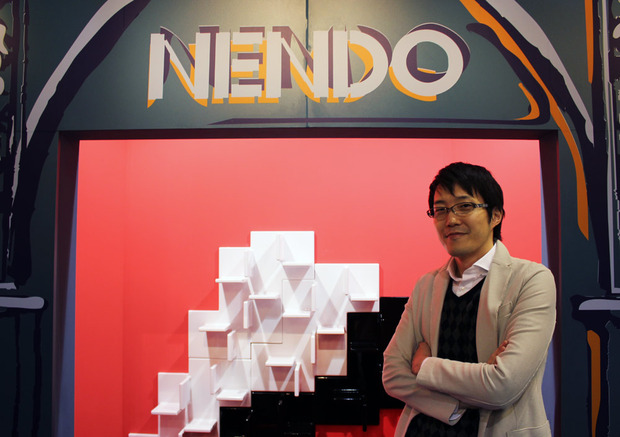
Arguably one of the most influential—and certainly one of the most prolific—contemporary design studios, Nendo is everywhere. From furniture collaborations to large scale architectural installations, the Japanese studio, led by celebrated designer and architect Oki Sato, is well on its way to becoming a household name. After a welcomed assault on Milan Design Week last year, Nendo returned with yet another fruitful showing across multiple platforms at this year’s Salone del Mobile. Standing alongside their recent modular bookshelf design for Kartell, we had the pleasure of catching up with Sato at the fair, who shed light on color, scale and time, and showed no signs of slowing down.
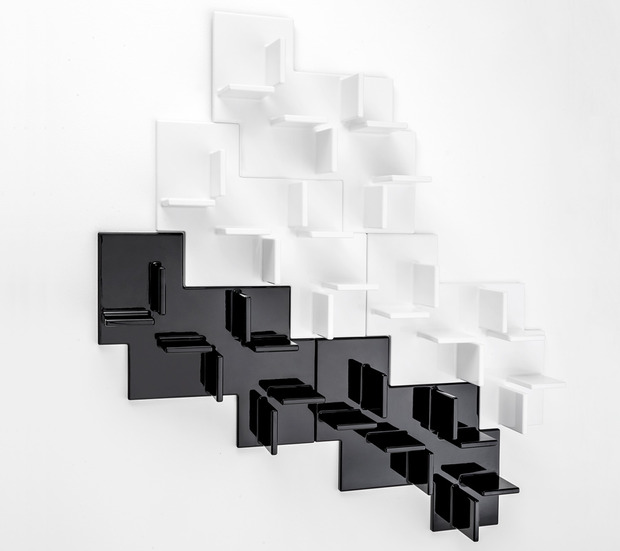
Where does the name Nendo come from?
Nendo means like Play-Doh, like that kids would play with. That’s exactly the way I want to work as a designer—to be flexible and changing like Play-Doh changes color, shapes, sizes, to have that flexibility in designing.
Kartell is known for their use of color and transparencies, whereas your work tends to be more monochromatic. How did this effect your collaboration?
If it works on white and black it works for all colors.
I guess it’s part of our cultures. Let’s say for Italians, when one says red, Italian designers can see a lot of different reds. They have hundreds of colors of reds, but not just red. On the other hand, I think the Japanese, we perceive more tones of light and shadow. So that’s one of the reasons why I guess Japanese designers tend to like white and black—so we can play more with shadows and light. And that’s where we start working on finishes and forms as well. Usually we start working on white and black because it’s totally the contrary and we can see if it works or not, if it works on white and black it works for all colors.
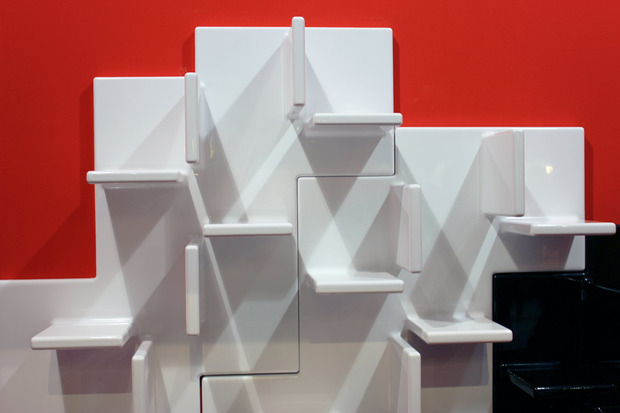
It seems much of your work is inspired by a kind of “ah-ha” moment. Where do you see that in Cliff, with the modularity?
Mm-hm, yes, I think so. Not many shelves could be used in all directions. They snap into each other like a jigsaw puzzle. You can really play with and it can be combined in different ways, you can flip it in 90 degrees or 180. It’s a very simple idea, but every unit has I think four shelves—vertical shelves and horizontal shelves. And so when it’s vertical it’s used as like a bookend almost. It’s a very simple idea but I think it’s an idea that users can really play with.
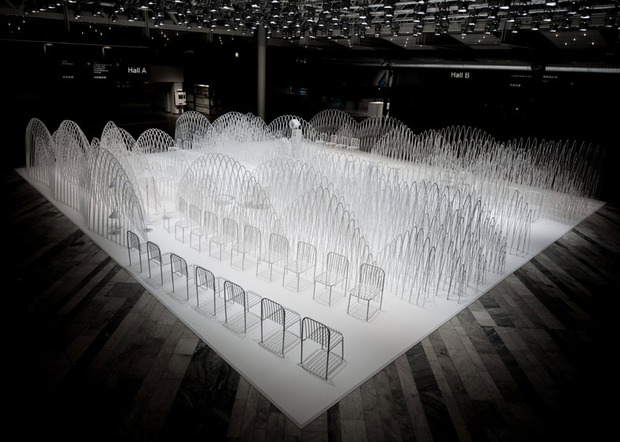
Your studio recently created an installation for the Stockholm Furniture Fair, which was quite large. And here you have something so small, like Cliff. What scale do you prefer to work on?
I like working on small scales. The huge installation that I did in Stockholm, that started from a small idea—a single sheet of paper that is stretched open to create this transparent mountain. And then by duplicating those it created a big installation. I try to have my ideas be very small and try to maintain the big according to the project.
Last year during Salone del Mobile Nendo was everywhere and it seems like this year as well. Looking at all the projects your studio has done, how do you juggle it all? Are you involved with every single project?
Yes, yes. I work on all of the initial concepts. I meet all my clients. I do all my presentations and check all the prototypes and the construction sites as well. We are a team of 28 to 29 designers, but I check it all. Everything.
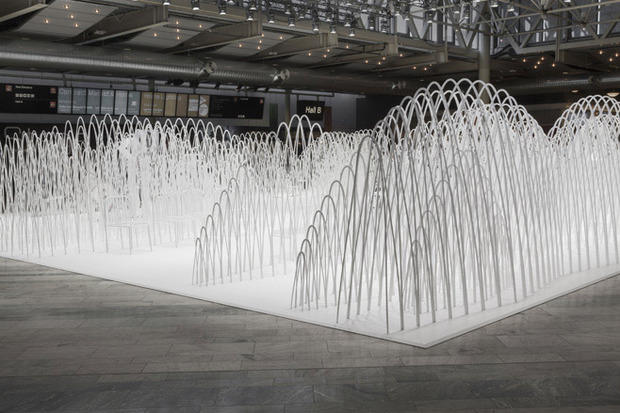
So you never take a day off?
No, I don’t. And we’re working on about 220 different projects at the same time, all at once. So in the end I have to travel around the world almost every month. I start from the west side of the States, go to NY and then fly to Europe, and I stay there for about a week meeting with all the clients there. Then I go to the Asian countries to check on the interior sites. And then I come back to Japan for about two weeks and it just keeps on going like that. It’s really nice. It’s really exciting.
To purchase the Cliff book shelf contact Kartell directly. Stockholm Furniture Fair images courtesy of Nendo, studio image by Kartell, all others by Graham Hiemstra











